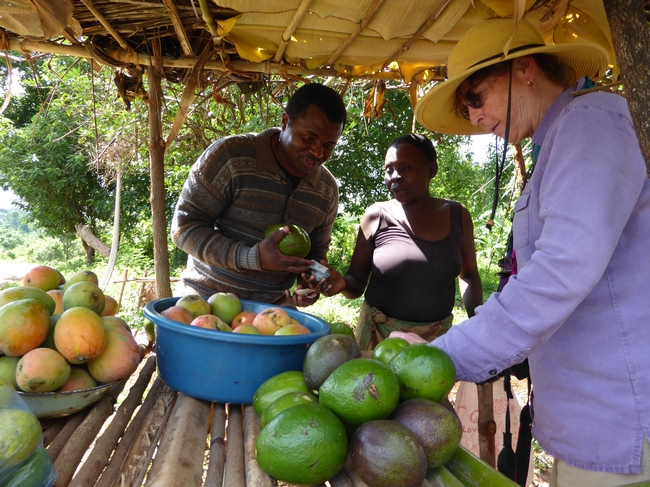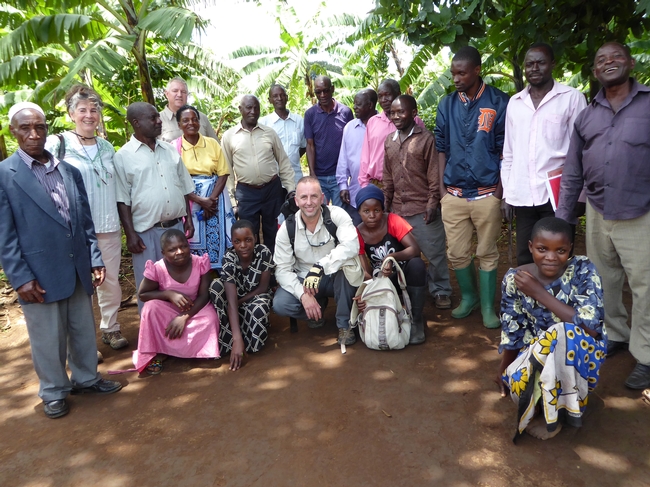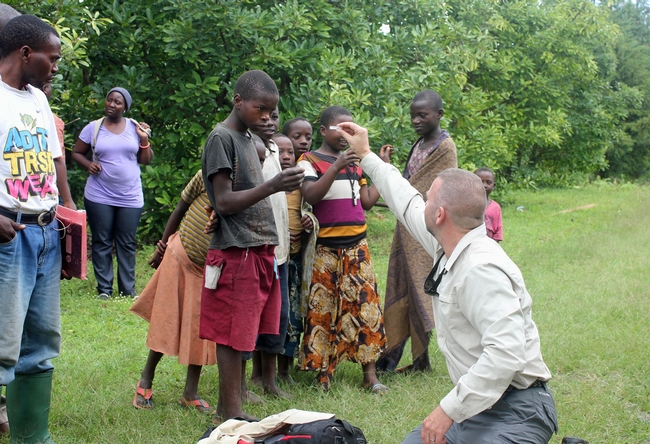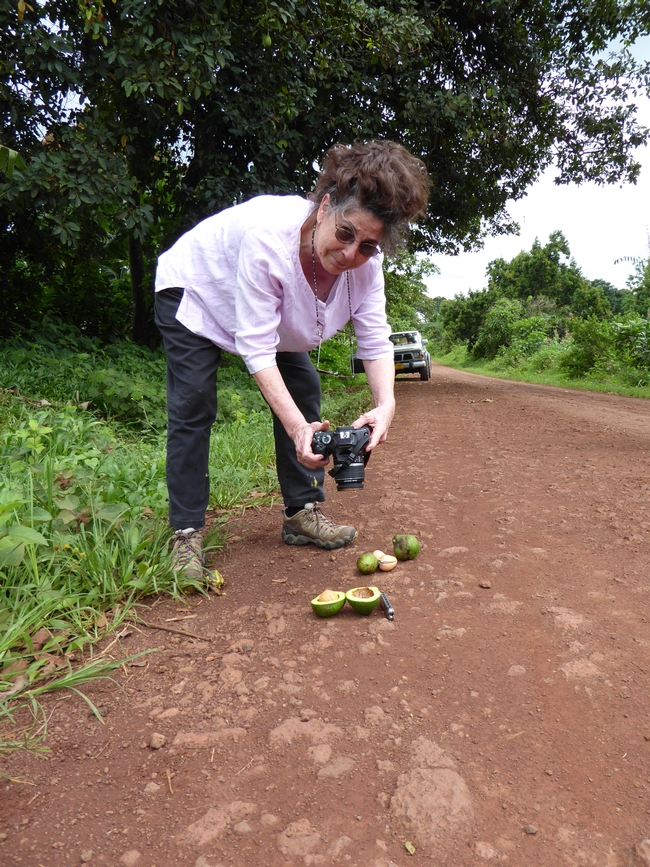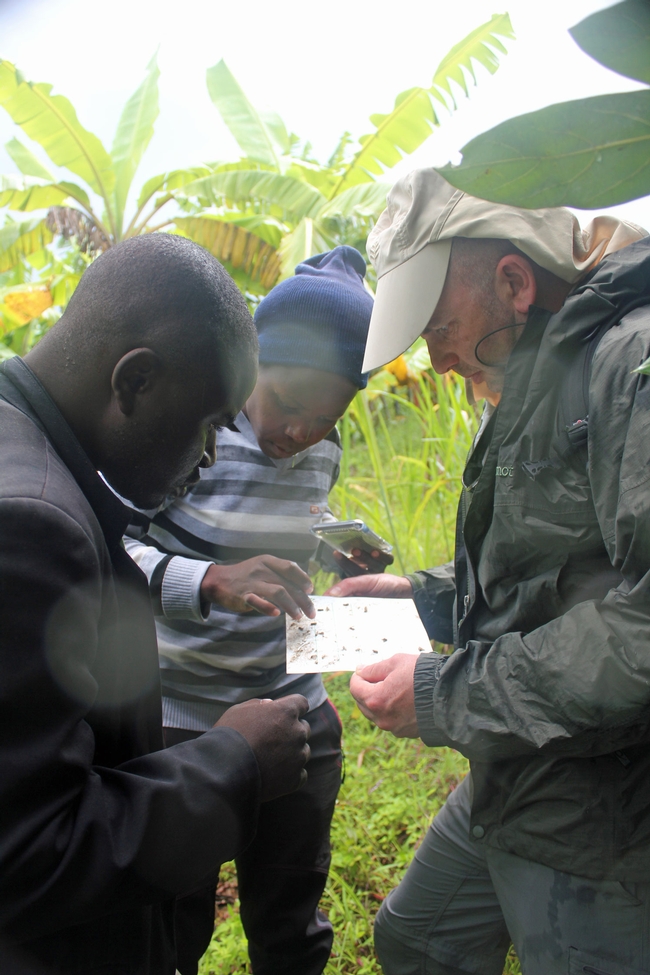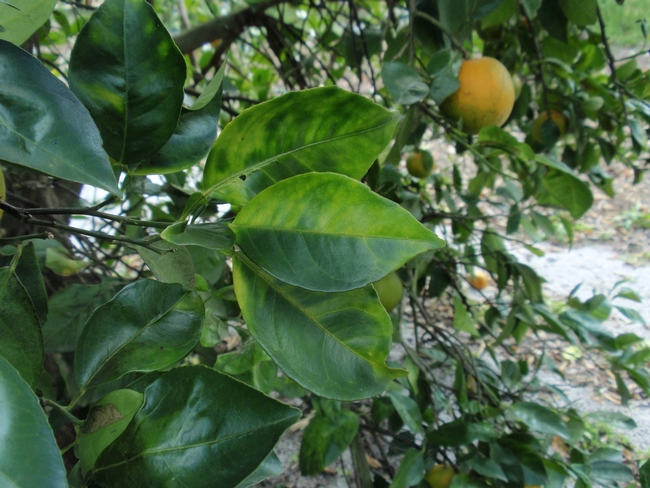Posts Tagged: Mark Hoddle
UC ANR scientists help fledgling Tanzania avocado industry
Dedicated growers and research support from the University of California have made avocados a California success story. As part of the UC Global Food Initiative, which is channeling UC resources toward sustainably feeding the world's growing population, the California avocado experience can help alleviate food insecurity and poverty overseas.
Two UC Cooperative Extension specialists found a way to do that in Tanzania, Africa, where 69 percent of the population live below the poverty line and 16 percent of children under 5 are malnourished. In March 2017, UCCE biocontrol specialist Mark Hoddle and UCCE subtropical crops specialist Mary Lu Arpaia traveled to the east African nation to help growers there with their fledgling avocado industry.
In the late 19th Century, German missionaries introduced avocados to Tanzania when it was colonized by this European nation. Germany lost influence over the African country following World War I, but huge non-commercial avocado trees still thrive in the landscape.
Recently, attempts at commercial production growing the popular Hass variety are gaining momentum.
With proximity to a European market hungry for fresh avocados, Rungwe Avocado Company planted 250 acres of the Hass variety in the southern highlands around Mbeya near Lake Malawi, which establishes the border of south western Tanzania with Zambia and Malawi. In order to grow production to a level that would make the export to Europe practical and to support rural residents with a viable business option, approximately 3,700 small landholder farmers, known as outgrowers, were recruited to grow avocados. They manage small plots with as few as 20 trees to larger acreage with more than 200 trees, with participating farms ranging in elevation from 1,200 to nearly 6,000 feet.
However, this fledgling industry is experiencing production challenges, prompting the company to contact UC Cooperative Extension. UC faculty, specialists and advisors have conducted research on Hass avocados for decades in California and worked closely with growers to extend information that has supported the development of an industry with high-yielding trees producing premium fruit valued at more than $400 million per year.
“One of the aims of the Global Food Initiative is to deploy UC's best research and extension practices to address the key challenge of improving food production,” Arpaia said. “That's why we went to Tanzania.”
Hoddle and Arpaia visited growers, extension technicians, packing house managers and logistics experts. They identified production, pest management and fruit handling challenges faced by the avocado industry.
“The situation in Tanzania is quite different than California, and also different compared to Central and South America, where we have also worked on avocado production issues,” Hoddle said. “But we identified familiar issues that affect management for which there are solutions.”
Hoddle examined the Tanzanian avocado trees and fruit, and collected insect specimens. He said the insect damage was minimal at the time of the week long visit.
“That surprised me because of the insect biodiversity in Africa,” he said. “There was little evidence of heavy leaf feeding. There was some evidence of fruit damage caused by insect feeding on the skin, but they don't seem to have fruit boring weevils or caterpillars that we commonly see in parts of Mexico, Central and South America.”
A critical issue is extending entomological information to the outlying farmers to improve their ability to identify and manage beneficial insects and crop pests.
“They don't have the magnifying loops, collecting vials and insect boxes that we regularly use for insect identification,” Hoddle said. “I showed them my Leatherman tool, which can be used to open up fruit and look for damage. They need these basic tools.”
A post-harvest expert, Arpaia was able to identify ways to improve picking, handling, storage and shipping practices that would result in top quality fruit arrival in Europe.
The two scientists produced a report, which emphasized the need to provide outlying growers with basic equipment and agronomic information.
“We want to help them be better avocado farmers so the crop can be a greater contributor to the country's economy,” Arpaia said. “Boosting this industry will also give people all over Tanzania the opportunity to add nutritious avocados to their diets.”
Citrus industry, UC Riverside and UCCE team up to fight a citrus killer
On June 6, citrus industry, university and government leaders gathered at UC Riverside Citrus Variety Collection to announce a joint effort to fight huanglongbing (HLB), also known as citrus greening disease. Huanglongbing is a bacterial plant disease fatal to citrus trees
The effort will result in construction of a biosafety-level 3 plant facility in Riverside, about two miles north of UC Riverside.
The biosafety-level 3 plant facility will allow researchers, including many from UC Riverside who are experts on citrus pests, diseases and breeding, to conduct work with plant pathogens that previously couldn't be done in Southern California. (There is only one other such facility in California – at UC Davis.)
The new biosafety-level 3 building will be built and owned by the California Citrus Research Foundation, which is funded by citrus growers.
At the June 6 gathering, Kim Wilcox, chancellor of the UC Riverside, spoke about the establishment in 1907 of the Citrus Experiment Station in Riverside. That research station eventually grew into UC Riverside. He noted that the research station received a boost after a 1913 freeze that devastated the citrus industry.
“Now, unfortunately, 100 years later, we have a different kind of natural threat, Wilcox said. “It's not weather in this case but an insect. And again the university, the federal government and private partners have come together and said ‘We can address this.'”
Georgios Vidalakis and Mark Hoddle are two UC Cooperative Extension specialists based at UC Riverside who will benefit from the facility.
Vidalakis is a UCCE specialist in plant pathology and director of the Citrus Clonal Protection Program at UC Riverside. The program provides a safe mechanism for the introduction into California of citrus varieties from around the world.
“Having access to live plants that carry the bacteria is very, very important to our program because it allows us to develop and validate diagnostic techniques much more quickly,” Vidalakis said.
Vidalkis has ongoing projects at the biosafety-level 3 plant facility in Davis as well as one in Maryland. Having his experimental material hundreds or thousands of miles away is a difficult, costly and inefficient way to conduct science, he said.
“This new facility in Riverside will help tremendously in the fight against HLB,” he said. “It is also a great investment for future threats to the California citrus industry.”
Hoddle is a UCCE specialist in entomology and director of Center for Invasive Species Research at UC Riverside. In recent years, Hoddle has released two species of wasps native to Pakistan that are natural enemies of the Asian citrus psyllid, the vector of a bacterium that causes HLB.
Hoddle called the biosafety facility a critical resource for righting HLB that will greatly assist UC Riverside researchers.
“This investment will likely allow more rapid and cost effect progress in developing mitigation strategies and novel technologies for managing HLB in California's iconic citrus crop,” Hoddle said.


